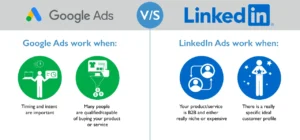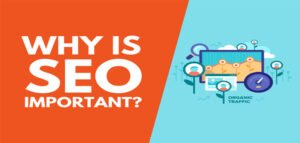In the dynamic landscape of digital marketing, two acronyms often emerge in discussions about driving traffic and enhancing visibility: There are two most common e-business marketing techniques, SEO (Search Engine Optimization) and SEM (Search Engine Marketing).
Though they look quite similar and some people cannot distinguish between them, they reflect rather different strategies and have different advantages.
Understanding SEO and SEM
SEO is a natural form of web promotion that improves a website’s ranking in search engine result pages. These encompass keyword identification, the development of content, the actual on-site SEO, backlinking, and other related techniques, such as technical ones. As the main purpose of SEO is to position at the top of the list of unpaid results, one targets users looking for specific information, products, or services.
Search Engine Marketing (SEM), therefore, covers a wider scope of processes, which include paid placements to facilitate the results to pop up in the search engine. SEM is often done through PPC, or pay-per-click advertising, in which companies compete over keywords so that their ads will appear first on the Google search page.
Overview of SEO, SEM, and The Relationship Between the Two
Although SEO and SEM can be thought of as two separate strategies, they can also be two different strategies used in the same approach. But they can go hand in hand to build an integrated digital marketing strategy. Here’s how they complement each other:
- Data Sharing and Insights: SEO and SEM can offer a great deal of data that can be used to enrich one another’s strategies. For instance, information on the keyword efficiency in SEM campaigns enables a firm to make improvements on the SEO keyword focus. In contrast, knowledge obtained based on the organic traffic and users can be used to inform SEM ad messages and audience selection.
- Enhanced Visibility: Both SEO and SEM can make a brand occupy high rankings on the web, thus making the brand well visible. While SEO works at long-term search engine ranking and placement levels, SEM can deliver first-page placements. It guarantees that at one point a business is relevant to the user`s need at another by targeting it accordingly.
- Budget Optimization: Since SEO and SEM have proactive and contrasting campaigning methods, they give businesses the best figures for marketing budgets. For instance, in case some keywords prove well in organic search, organizations can spend a little more on the same keywords when it comes to SEM while expending most of their resources where organic yields low results.
- Building Trust and Credibility
Website visitors often have more faith in finding something via search engines than through a blatant advertisement. An increase in the ranking of a business in the organic search results makes the business gain more credibility from potential buyers. It is much more effective to see the same brand in both organic and paid results because it strengthens trust and increases potential clicks and conversions.
The Best of Both Worlds: A Unified Strategy
For better results, businesses should incorporate SEO and SEM for a fully holistic approach.
- Conduct Comprehensive Keyword Research: Apply tools to find out the top keywords for SEO and SEM. Cheap and non-cheap keywords must be searched to filter out the keywords that naturally attract high traffic as well as the keywords that can attract high traffic when advertised online.
- Create Relevant Content: Create content for the keywords identified in this process to match the interests of both generic web search and paid advertisement search. It is vital to guarantee that the company’s landing pages are useful and fit users’ expectations.
- Utilize Remarketing Strategies: It is recommended to use remarketing in SEM to establish a connection with the customers who already visited the site. This cements your brand while ensuring you get more business from clients who already understand the products or services you are offering.
CONCLUSION
All in all, SEO and SEM are two fundamental pieces of digital marketing mixes or strategies. Though they are fundamentally different technologies, they can provide a synergy that will help with improved visibility, a better UX, and ultimately more conversions. If you are a first-time digital marketer or a seasoned marketer looking to optimize your current presence, then it is crucial to draw a clear line between SEO and SEM to succeed in a rapidly changing market.
As the best SEO and SEM marketing agency, we also provide our digital services in the USA, Canada, Australia, and Dubai. Are you ready to take your brand to a whole new level of marketing?








